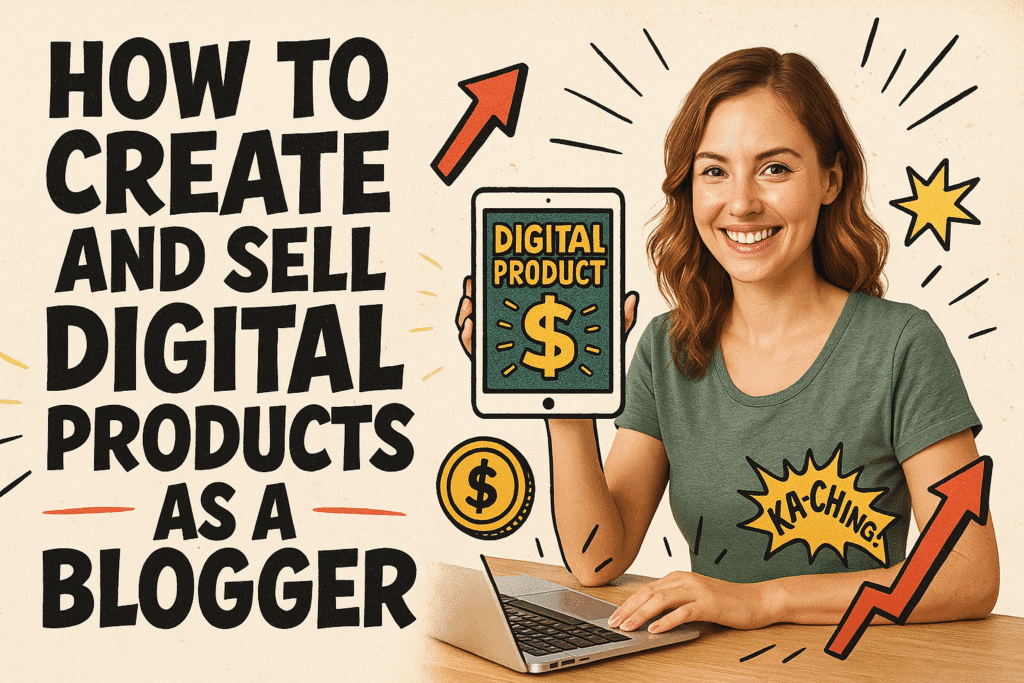
The Proven Path to Preselling, Creating, and Scaling Profitable Offers (Without Wasting Time)
✅ Quick Summary / Key Takeaways
- Presell before you build: Validate your idea before you spend time making it.
- Survey, don’t assume: Your audience will surprise you — ask what they need right now.
- Repurpose content: Your blog already holds product-worthy material. Use it.
- Use beginner-friendly tools: Canva, Podia, ConvertKit, and Gumroad make it easy.
- Subscription = stability: Recipe clubs, memberships, and drip content offer recurring revenue.
📊 Stats Snapshot & Product Breakdown
| Product Type | Price Range | Best For | Time to Create | Tech Needed |
|---|---|---|---|---|
| Ebook | $9–$47 | How-to, food, finance | 1–2 weeks | Canva, SendOwl |
| Mini Course | $27–$99 | Tutorials, coaching | 3–6 weeks | Podia, Teachable |
| Membership Club | $5–$30/mo | Recipes, planners | Ongoing | ConvertKit, Patreon |
| Templates/Printables | $3–$25 | DIY, parenting, budgeting | 3–5 days | Etsy, Shopify |
| Audio/Email Series | $10–$47 | Wellness, habits | 1–2 weeks | ConvertKit, Gumroad |
✅ Checklists
✅ First Product Fast Track (5-Day Plan)
Day 1: Ask your audience 2 questions
Day 2: Create a 1-page landing page with a waitlist
Day 3: Promote the waitlist via email or social
Day 4: Create your outline or pull together existing blog posts
Day 5: Open presale with founder discount (no product made yet)
✅ Simple Swaps
| Instead of… | Do This Instead |
|---|---|
| Guessing your audience’s needs | Ask them with a 2-question survey |
| Building the whole product first | Presell with a waitlist + founder discount |
| Pricing based on competitors | Price-test during presale |
| Starting from scratch | Repurpose blog content into ebooks/templates |
✍️ Introduction:
From Flops to Founders Club: My Honest Journey with Digital Products as a Blogger
When I started blogging, the idea of selling digital products seemed like a dream. I was elbow-deep in recipes, SEO, food photography, and chasing the next pageview. I didn’t come from a tech background. I didn’t have an email list strategy. I didn’t even think of myself as a “digital entrepreneur.”
But over time, I realized something most bloggers eventually do: traffic doesn’t always equal income.
You can rank on Google. You can get thousands of Pinterest clicks. But unless you have something to sell — something yours — you’re just borrowing space on the internet.
So I started dabbling in digital products. My first real attempt? A complete flop.
I spent weeks (okay, more like months) creating a beautiful digital product for my food blog. It had recipes, meal plans, grocery lists — everything I thought my audience wanted. I didn’t ask them what they were struggling with. I didn’t presell it. I didn’t validate the idea.
I just assumed.
And when I finally launched it… crickets.
Not a single sale.
No feedback. No DMs. No “almost bought” replies. Just total silence.
And honestly? It crushed me.
Because I knew it was good. But that didn’t matter — I skipped the most important step: figuring out if it solved a real problem for my audience right now.
What Changed Everything? Preselling.
Later, I tried again — but this time I did it differently.
I was in a totally different headspace: a little burned out, more cautious, and way more practical. I didn’t want to waste time again. So I tried something that felt a little scary:
I presold the product before I made it.
That means I pitched the idea to my audience first — no product built, no pretty graphics, no fancy sales page.
Just a simple email:
“I’m thinking of building this. If you’re interested, I’m opening 30 discounted spots for founding members.”
To my surprise, it sold out.
30 people signed up.
No course modules had been made yet.
No design. Just a promise and a timeline.
That launch changed everything.
Because it taught me that the best digital product strategy is rooted in demand, not guesswork.
Why Bloggers Are Perfectly Positioned for Digital Products
As bloggers, we’re already creating content.
We’re writing tutorials, solving problems, offering encouragement — for free.
A digital product is just a more structured, elevated version of what we’re already doing.
And here’s the thing: if you’ve been blogging for a while, you’re probably sitting on enough content right now to build:
- A 30-page ebook
- A printable bundle
- A month-long email course
- A subscription product that delivers every month
The work is already done. You just need to repurpose it, package it, and present it in a way that solves a real need.
That’s why digital products are such a smart play for bloggers:
✅ No inventory.
✅ No shipping.
✅ 100% profit after setup.
✅ And they scale.
Whether you’re a food blogger, personal finance expert, parenting voice, or lifestyle writer — you’ve already proven your ability to attract and help an audience. Digital products let you monetize that relationship without starting from scratch.
What I’ve Tried (And What I’d Do Again)
Here are just a few things I’ve built — the wins and the losses:
- ✅ Recipe Club — I launched a membership that delivered exclusive recipes monthly. At the time, I priced it at $9.99 per year. It sold, but looking back… that was way too low. If I were doing it today? $10 per month — and people would pay it.
- ✅ Ebooks — I’ve taken clusters of blog posts (like sugar-free snacks or gut-friendly meals) and turned them into 20+ page PDFs that sold for $17–$27. These were some of the easiest products to build — and had great ROI.
- ❌ Meal Plan Bundle — My first attempt. Beautifully designed, totally ignored. Why? Because I never asked if anyone wanted it. I was solving a problem I thought they had. And it turns out, that wasn’t their pain point at all.
So now I follow a rule:
Presell first. Create second. Always ask. Never assume.
I treat my blog like an incubator — a place to test ideas, spot patterns, and pull products out of what’s already working.
Why This Article Matters (and Who It’s For)
This guide isn’t for people who already have $200K launches and full-time teams.
It’s for bloggers like me — and probably like you:
- People who want to earn more from the content they already have
- People who don’t want to waste time creating the wrong thing
- People who want to start small, smart, and sustainably
You don’t need a fancy funnel or huge audience.
You just need to understand your reader, ask the right questions, and build the minimum viable offer that solves their problem.
I’ve done it wrong. I’ve done it right. And I’ve learned that creating and selling digital products is one of the best ways to monetize your blog long-term — as long as you do it the right way.
So in this article, I’ll walk you through:
- How to test your product ideas before making anything
- What tools to use (even if you’re not techy)
- What to charge (and how to stop underpricing)
- How to create recurring income with subscriptions
- And what to do when something flops
Let’s get started.
Table of Contents
🛍️ What types of digital products can bloggers sell?
Direct Answer: You can sell ebooks, courses, subscriptions, printables, email series, audio lessons, or editable templates — based on your blog’s niche.
Product Ideas by Niche
| Blog Niche | Digital Product Ideas |
|---|---|
| Food | Meal plans, recipe ebooks, cooking classes, grocery lists |
| Finance | Budget trackers, debt planners, tax guides |
| Parenting | Chore charts, reward systems, behavior trackers |
| Wellness | Guided journals, habit trackers, meditation audios |
| Blogging | Media kits, email templates, blog post calendars |
| DIY/Crafts | Project templates, SVG files, printables |
Real Tip: Look at your most popular blog posts. The product idea is already there.
📘 How do you create an ebook from your blog?
Direct Answer: Choose 3–5 blog posts around a single theme, combine and edit them into a guide, then design using Canva or buy a pre-made Etsy template.
My Flow:
- Pick a blog post cluster (e.g., sugar-free snacks)
- Copy and paste into Google Docs
- Add transitions, intro, and outro
- Design with a Canva or Etsy template
- Export as PDF — done
Example:
From 4 blog posts on meal prepping → I created a “7-Day Prep Ahead Plan” that sold for $17.
🛠️ What tools make it easier to build your first product?
| Tool | Use Case | My Notes |
|---|---|---|
| Canva | Ebook and printable design | Easiest option for visuals |
| Etsy Templates | Pre-designed ebooks | $5–$15 can save hours of work |
| ConvertKit | Email delivery, paywalls | Great for email-first products |
| SendOwl | Sell files, coupons, upsells | Super light + direct |
| Podia | All-in-one courses, downloads | No-code, drip content, memberships |
| Gumroad | Easy one-page shops | No site needed |
Takeaway: You don’t need to be techy — just pick 1-2 tools and ship something small.
🚀 Why is preselling non-negotiable?
Direct Answer: It’s how you confirm there’s demand — before you make the thing.
What I Did Right:
My best-selling course? I wrote 2 emails.
Email 1: “Would this help you?”
Email 2: “Founding members get it early + cheaper.”
30 people paid before I built anything.
What I Did Wrong:
With my food brand, I made a full digital product. Months of work. Launched to silence.
No sales. No validation. Just a hard lesson.
Takeaway: If you’re afraid no one will buy, that’s exactly why you should test it.
📣 How do you survey your audience the right way?
Direct Answer: Ask 2–3 simple, current questions.
Here’s what I ask:
- What project are you working on this month?
- What’s your biggest challenge with ___?
- Would you pay $X for help with ___?
Tools to Use:
- Email: ConvertKit, Mailerlite
- Instagram: Polls or question box
- Google Forms or Typeform
Pro Tip: Don’t assume your readers want “budget help” — ask them what’s on their plate right now.
📦 What’s a simple but effective launch strategy?
The Minimum Viable Launch:
- Presell to your email list
- Offer a “founding members” discount
- Create one lesson/module/week after people buy
- Ask for feedback during delivery
Real Example:
I launched a course without building it first. Told my list: “I’ll build it week by week.”
They loved it — felt involved. And I didn’t waste time building the wrong thing.
CTA Tip: Use Podia or ConvertKit to deliver new modules weekly via email.
🛒 Where should you sell digital products?
| Platform | Best For | Transaction Fee | Notes |
|---|---|---|---|
| Gumroad | Ebooks, templates | 8.5% + $0.30 | Easy to use, no site needed |
| SendOwl | Files, upsells | $15+/mo | Great automations |
| Podia | Courses, memberships | $0–$39/mo | Very user-friendly |
| Etsy | Printables | Listing + 6.5% | Marketplace visibility |
| ConvertKit | Email-based delivery | Free to start | Email-native product flow |
Tip: Don’t overthink it. Choose the tool that fits your tech comfort and list size.
💸 How do you price products for profit (without undercharging)?
General Guide:
- Printables: $5–$15
- Ebooks: $17–$47
- Mini courses: $27–$97
- Subscriptions: $7–$30/month
Mistake I Made:
My recipe club launched at $9.99/year.
That’s too low. Now I’d charge $10/month — it’s worth it and more sustainable.
Pro Tip: In presale emails, test:
“Would you pay $27 for a copy of this plan?”
🔁 How can you create recurring revenue from digital products?
Ideas That Work:
- Recipe Club: New digital recipes each month (PDF or email)
- Content Vault: Monthly blog post templates or swipe files
- Mini Training Series: Drip email course (weekly)
- Wellness Club: Monthly audio meditations or printables
Real Example:
My readers loved recurring recipes they didn’t have to plan for. I used ConvertKit to deliver them monthly automatically.
Tip: Subscriptions = stability. Even 50 members at $10/mo = $500/month.
❌ What if no one buys? What if it flops?
First: It’s okay. You just saved yourself months of wasted work.
Here’s what to do:
- Email your list: “Hey, I thought this would help, but maybe I missed the mark. Can you reply and tell me what would help right now?”
- Reposition the offer: Maybe the format or title is off.
- Turn it into a freebie to build your list
Remember:
You didn’t fail. You learned faster than most people.
🌱 Advanced Tips / Best Practices
- Use affiliate tools you love (Canva, Podia, ConvertKit)
- Batch product creation using blog posts + AI (ChatGPT)
- Offer bundle deals (ebook + printable = $10 off)
- Add upsells: “Want the workbook version?”
- Always build an email list alongside your product
📚 Where to Learn More
Want more checklists, templates, and tools to help you launch your first digital product?
Click here to explore the rest of Money Diary.
✅ Wrap-Up / Final CTA
You don’t need to be techy. You don’t need a giant list.
You just need to ask, serve, and keep it simple.
- Presell before building
- Use tools that save time
- Repurpose what you’ve already made
- Keep going — even when it flops
Your first $10 online is your most important.
Click here to start building your first product with Money Diary’s free resources and launch checklists.
✍️ About the Author
Kelly Bejelly is the founder of Money Diary. She’s built and sold multiple blogs, launched digital products that flopped — and some that paid her mortgage. Her motto: survey first, presell second, deliver last.
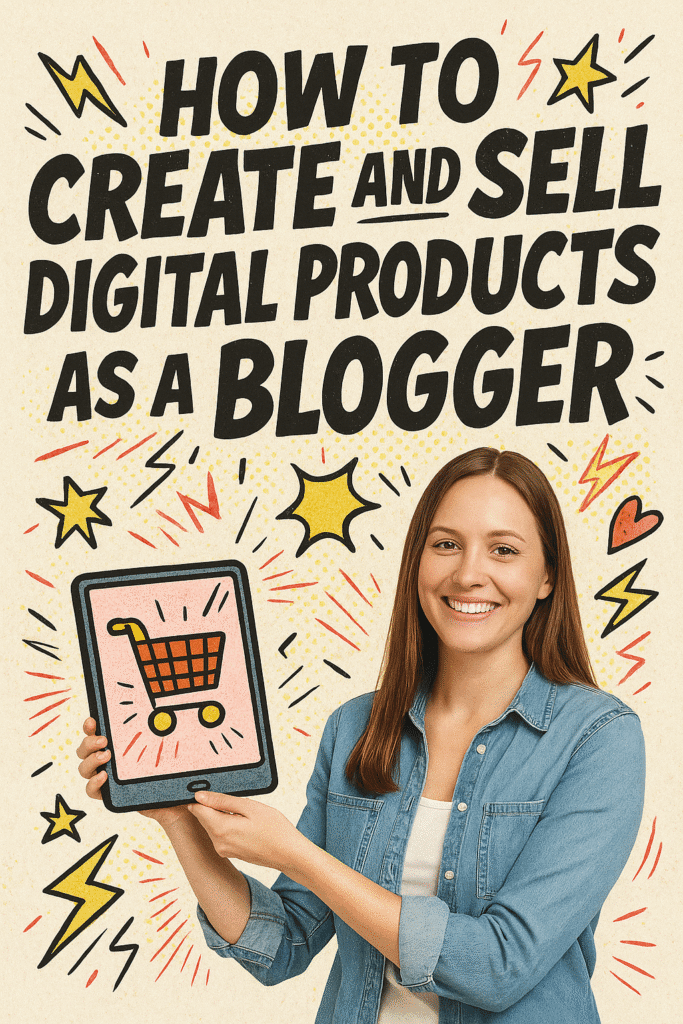
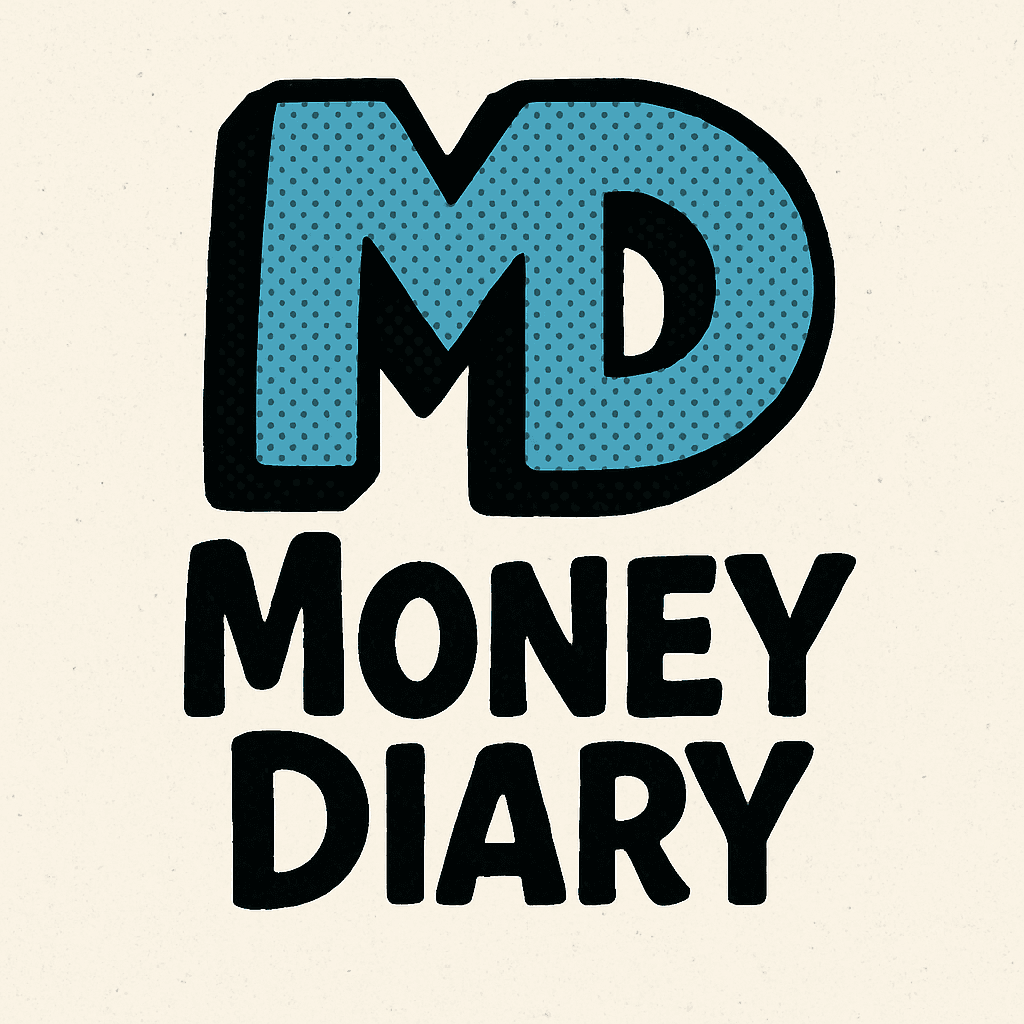

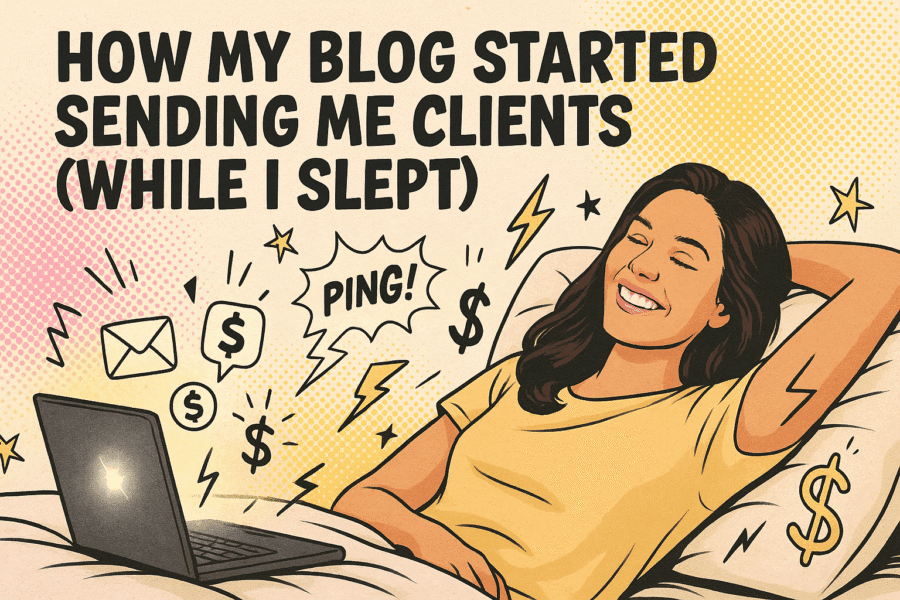
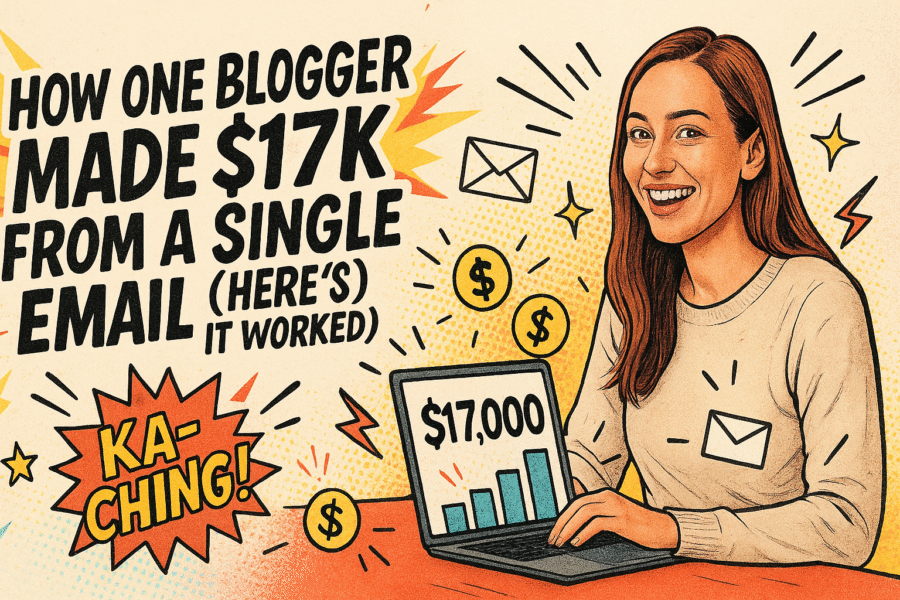
Leave a Reply